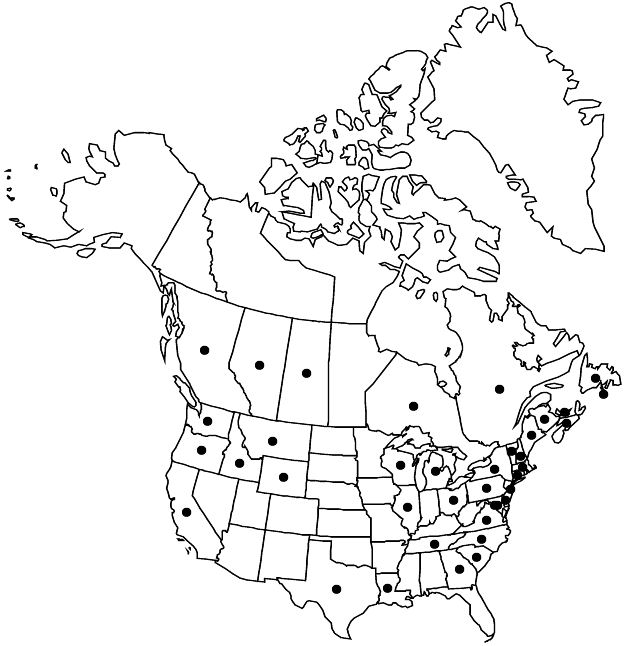Euphorbia helioscopia
Sp. Pl. 1: 459. 1753.
Herbs, annual, with taproot. Stems erect, unbranched or branched, 5–45 cm, usually glabrous or sparsely pilose. Leaves: petiole absent or to 0.5 mm; blade obovate-spatulate, 4–40 × 2–25 mm, base cuneate, attenuate, or auriculate, margins serrulate, apex rounded, surfaces glabrous; venation pinnate, midvein prominent. Cyathial arrangement: terminal pleiochasial branches (3–)5, each 1–2 times 2-branched; pleiochasial bracts obovate, wider than distal leaves; dichasial bracts distinct, obovate or rhombic, ± oblique, base rounded, truncate, or attenuate, margins serrulate, apex rounded; axillary cymose branches 0. Cyathia: peduncle 0.2–1 mm. Involucre cupulate, 1.5–2 × 0.7–1.1 mm, glabrous; glands 4, elliptic, 0.2–0.5 × 0.5–1 mm; horns absent. Staminate flowers 10–15. Pistillate flowers: ovary glabrous; styles 0.7–1 mm, 2-fid. Capsules depressed-globose, 2.5–4 × 3.2–4.2 mm, clearly 3-lobed; cocci rounded, smooth, glabrous; columella 0.9–1.1 mm. Seeds dark brown to blackish, subovoid, 1.6–2.2 × 1.5–1.9 mm, reticulate; caruncle elliptic, 0.9–1.1 × 0.4–0.5 mm.
Phenology: Flowering and fruiting spring–fall.
Habitat: Roadsides, waste places.
Elevation: 0–1400 m.
Distribution

Introduced; Alta., B.C., N.B., Nfld. and Labr. (Nfld.), N.S., Ont., P.E.I., Que., Sask., Calif., Conn., Del., D.C., Ga., Idaho, Ill., La., Maine, Md., Mass., Mich., Mont., N.H., N.J., N.Y., N.C., Ohio, Oreg., Pa., S.C., Tenn., Tex., Vt., Va., Wash., Wis., Wyo., Europe, Asia, n Africa, introduced also in South America (Argentina, Chile).
Discussion
Euphorbia helioscopia was collected once in Minnesota in the late 1800s but apparently did not become established there.
Selected References
None.